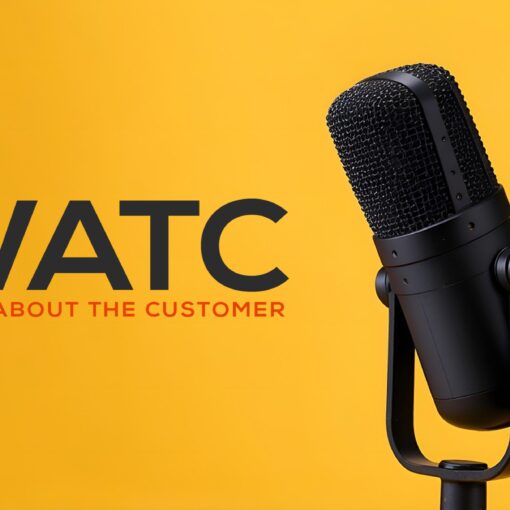In the world of business, gathering customer feedback has become commonplace. Surveys, reviews, social media monitoring, and focus groups are standard practice in most organizations. However, a significant gap often exists between collecting customer insights and actually implementing meaningful changes based on this feedback. This disconnect represents one of the most significant missed opportunities in customer centricity.
THE FEEDBACK COLLECTION PARADOX
Many organizations pride themselves on their extensive customer listening programs. They invest in sophisticated tools to capture the voice of the customer across multiple channels. Yet research consistently shows that customers increasingly suffer from “survey fatigue” and growing skepticism about whether their feedback makes any difference. This paradox emerges because organizations often excel at gathering feedback but struggle to convert those insights into tangible actions.
WHY CUSTOMER FEEDBACK OFTEN GOES NOWHERE
Several systemic barriers prevent organizations from effectively acting on customer feedback:
1. Fragmented Ownership
Customer insights typically flow into different parts of the organization without clear accountability for addressing them holistically. Marketing might own survey data, operations might manage complaints, and product teams might handle feature requests-with limited coordination between them.
2. Analysis Paralysis
The sheer volume of customer feedback can overwhelm organizations, leading to analysis paralysis. Without proper prioritization frameworks, teams struggle to distinguish between critical insights and less impactful feedback.
3. Misaligned Incentives
When departmental goals and employee incentives don’t align with addressing customer feedback, acting on insights becomes secondary to hitting internal targets. This misalignment creates structural resistance to customer-centric changes.
4. Implementation Constraints
Even when organizations identify valuable customer insights, they may lack the processes, resources, or authority to implement changes, especially when feedback suggests fundamental operational or product shifts.
5. Incomplete Feedback Loops
Many organizations never “close the loop” by communicating back to customers about how their feedback influenced decisions. This failure reinforces customer skepticism and reduces future engagement.
BUILDING AN EFFECTIVE CLOSED-LOOP FEEDBACK SYSTEM
To transform customer feedback into meaningful action, organizations need a comprehensive approach:
1. Establish Clear Governance
Effective feedback management requires clear ownership and cross-functional governance:
- Designate an executive sponsor accountable for the overall feedback system
- Create a cross-functional “customer insights council” with
decision-making authority - Define clear protocols for routing different types of feedback to appropriate
teams - Establish decision rights for determining which feedback merits action
2. Develop Prioritization Frameworks
Not all feedback deserves equal attention. Organizations should develop robust criteria for evaluating feedback, including:
- Frequency of the issue mentioned
- Financial impact (revenue opportunity or cost savings)
- Alignment with strategic priorities
- Implementation feasibility
- Customer segment importance
- Competitive differentiation potential
3. Design Action-Oriented Processes
Feedback collection should be designed with action in mind:
- Structure feedback questions to yield specific, actionable insights
- Incorporate root cause analysis into feedback review processes
- Create standardized “insight-to-action” templates to accelerate implementation
- Establish timelines and milestones for feedback implementation
- Develop measurement systems to track the impact of changes made
4. Close the Loop with Customers
The most overlooked aspect of feedback management is communicating back to customers:
- Acknowledge receipt of feedback promptly
- Explain what actions will be taken (or why certain feedback won’t be addressed)
- Provide updates on implementation progress
- Request follow-up feedback after changes are implemented
- Recognize and thank customers whose feedback led to significant improvements
5. Create Organizational Enablers
Supporting systems and cultural elements are essential:
- Integrate feedback data across channels into unified customer profiles
- Train employees on feedback management and implementation skills
- Recognize and reward teams that effectively implement customer insights
- Share success stories about feedback-driven improvements
- Include feedback implementation metrics in performance reviews
FROM INSIGHTS TO INNOVATION
When properly managed, customer feedback becomes more than just a quality control mechanism-it becomes a primary driver of innovation. Organizations that excel at closing the feedback loop discover that customers often suggest solutions that internal teams might never envision.
This approach transforms the traditional customer feedback model from a reactive quality assurance process to a proactive source of competitive advantage. Rather than merely fixing problems, organizations leveraging customer insights effectively can identify emerging needs, develop new offerings, and fundamentally reimagine customer experiences.
MEASURING FEEDBACK EFFECTIVENESS
To ensure your feedback system delivers value, track these key metrics:
- Feedback implementation rate (percentage of insights that lead to action)
- Time from feedback collection to implementation
- Customer satisfaction with the feedback process itself
- Impact of feedback-driven changes on customer experience metrics
- Return on investment for major feedback-driven initiatives
CONCLUSION
The difference between customer-listening organizations and truly customer-centric ones lies in their ability to translate insights into action. By establishing clear governance, prioritizing effectively, designing action-oriented processes, closing the loop with customers, and creating organizational enablers, companies can transform feedback from a perfunctory exercise into a powerful engine for continuous improvement and innovation.
In an era where customers increasingly expect their feedback to matter, organizations that demonstrably act on customer insights gain significant advantage in building loyalty, differentiating their offerings, and driving sustainable growth.




